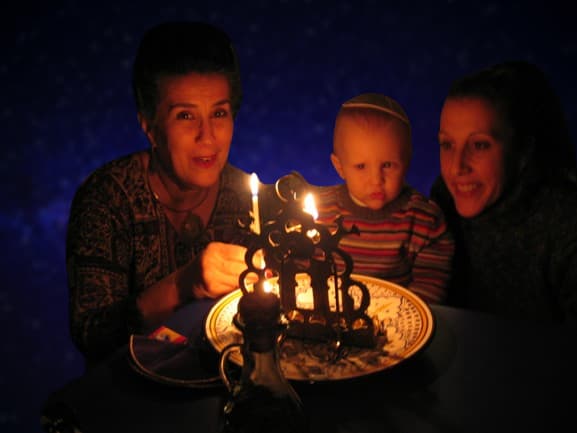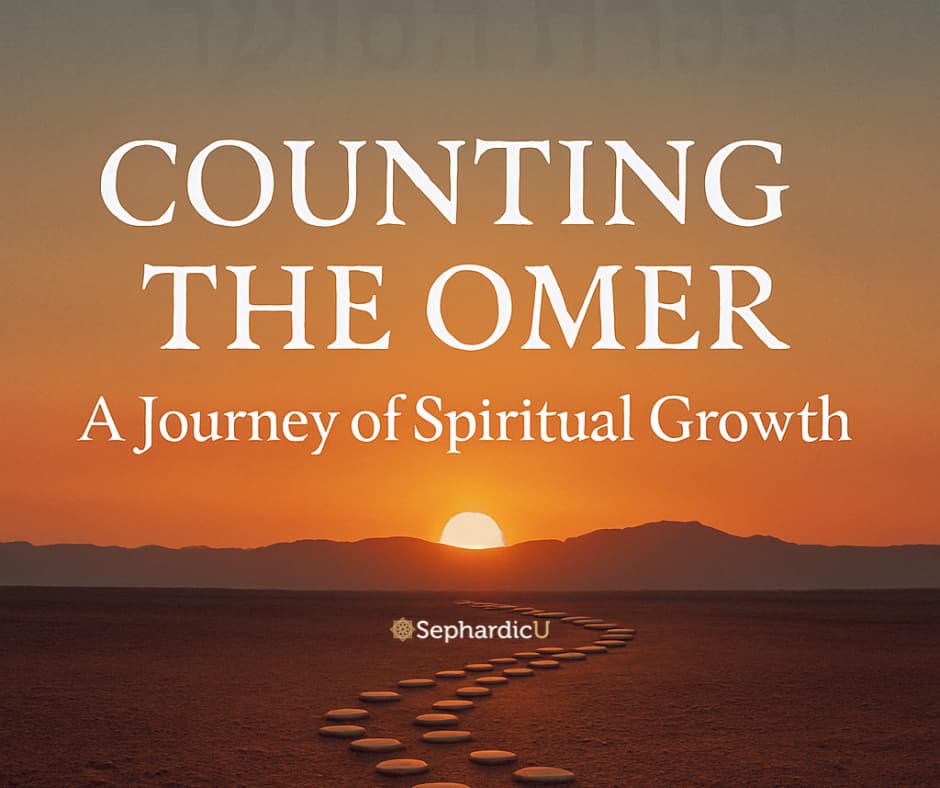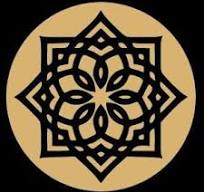While Hanukkah is celebrated with fervor across diverse Jewish communities, the Sephardic Hanukkah Halakhot carry a unique essence that reflects centuries of rich history and cultural amalgamation. In the intricate tapestry of Jewish traditions, the festival of Hanukkah stands as a beacon of light and resilience. At the heart of preserving and elucidating these distinctive customs stands Joseph Mosseri, a revered figure whose life’s work has been dedicated to unraveling, documenting, and safeguarding the nuanced observances of Sephardic Hanukkah.
Joseph Mosseri, born into a family deeply rooted in the Sephardic heritage, embarked on a lifelong quest to delve into the intricacies of Sephardic traditions. His academic pursuits, coupled with a profound passion for preserving the legacy of his ancestors, led Mosseri to become one of the foremost authorities on Sephardic Jewish practices. This article explores the profound teachings of Joseph Mosseri, shedding light on the unique aspects of Sephardic Hanukkah celebrations that have been meticulously passed down through generations.
Unraveling Sephardic Hanukkah Halakhot
At the core of Joseph Mosseri’s teachings lies a profound understanding of the Halakhot associated with Sephardic Hanukkah observances. Unlike the more widely known Ashkenazi traditions, Sephardic customs during Hanukkah vary significantly, requiring a careful and considered approach to preserving their authenticity.
Mosseri, recognizing the potential erosion of Sephardic customs due to societal shifts and ignorance, undertook the responsibility of meticulously recording these Halakhot. His work becomes a timeless guide for those seeking to understand, embrace, and perpetuate the unique rituals associated with lighting the Hanukkah menorah, or as Mosseri emphasizes, the “Hanukkah.”
The Essence of Lighting: Oils, Wicks, and Order
A distinctive feature of Sephardic Hanukkah traditions, as elucidated by Joseph Mosseri, lies in the meticulous attention to the lighting process. From the selection of oils to the order in which the candles are kindled, each step carries a significance that extends beyond the festival itself. Mosseri’s teachings emphasize the use of pure olive oil, symbolizing not only the optimal way to fulfill the commandment (מצוה מן המובחר) but also connecting practitioners to the miracle of the menorah in the Hanukkah story, where the Temple’s menorah remained lit for eight days with a single cruse of pure olive oil. This emphasis on quality and purity highlights the Sephardic tradition’s focus on hiddur mitzvah, the beautification of commandments.
The order of lighting, guided by the teachings of Maran Hakham Yosef Karo, author of the Shulchan Aruch, reveals a deliberate and symbolic progression. On the first night, the rightmost wick is lit, representing a starting point grounded in tradition. Each subsequent night, an additional wick is kindled to the left of the previous one, following a progression that mirrors the sanctification of time and the expanding miracle. The actual lighting proceeds in the opposite direction, starting with the newest candle and moving toward the rightmost one, thus ensuring that each night, the most recently added wick is lit first.
In Sephardic tradition, as taught by Joseph Mosseri and reflected in the teachings of Maran Hakham Yosef Karo in the Shulchan Aruch (Orach Chaim 673), the process of lighting the menorah is steeped in meticulous detail. This includes the materials used, the order of kindling, and the timing of lighting the shamash, all of which reflect deep symbolism and adherence to halacha.
The Use of Pure Olive Oil
Sephardic communities traditionally light their menorahs with pure olive oil, which mirrors the oil used in the original Hanukkah miracle. This choice fulfills the mitzvah in the most ideal way (mitzvah min hamuvchar) and serves as a connection to the historical and spiritual essence of the festival. Even the shamash is typically filled with olive oil, underscoring the importance of maintaining consistency and quality across all elements of the menorah.
Order of Lighting the Mitzvah Lights
The lighting sequence is highly structured and follows these principles:
On the First Night: Light the wick on the far-right side.
On Subsequent Nights: Add one wick to the left each night. Begin lighting with the newest wick (the leftmost one) and proceed to the right. This progression reflects the principle of Ma’alin BaKodesh Ve’Lo Moridin (we ascend in holiness and do not descend).
On the Final Night: Start with the wick closest to your left hand and light toward your right hand, mirroring the direction of Western writing.
This approach emphasizes the miracle of the oil, as the newest light symbolizes the growing miracle commemorated each night.
Lighting the Shamash Last
A distinct feature of this custom is that the shamash is lit after all the mitzvah lights. The process unfolds as follows:
-
Blessings and Kindling: After reciting the blessings, the wicks of the menorah are lit, starting with the newest addition and moving rightward until all the mitzvah lights are kindled.
-
Lighting the Shamash: Once the mitzvah lights are fully lit, the shamash is kindled using the auxiliary candle or lighting stick. This sequence highlights the primary role of the mitzvah lights and preserves their sanctity.
-
Extinguishing the Candle: The auxiliary candle or lighting stick is extinguished after lighting the shamash, as its role is complete.
The shamash serves a dual purpose:
-
It ensures that any incidental benefit derived from the menorah is attributed to it rather than the mitzvah lights.
-
It acts as the practical means of rekindling the wicks should they extinguish.
Symbolism and Tradition
By lighting the shamash last, Sephardic tradition places the mitzvah lights at the center of the ritual, ensuring they remain the focal point. This order preserves the sanctity of the mitzvah and reflects the Sephardic commitment to precision and reverence in religious observance.
The shamash, though humble in purpose, holds great symbolic importance. It represents service and support, illuminating the mitzvah lights without detracting from their holiness. The use of olive oil for the shamash further elevates its role, reflecting the dedication to performing the mitzvah with the utmost care and respect.
A Holistic Ritual
This nuanced approach to lighting the menorah underscores the Sephardic emphasis on tradition, symbolism, and halachic precision. From the exclusive use of olive oil to the deliberate order of kindling the lights and the timing of the shamash, each element weaves together to create a meaningful and spiritually rich observance of Hanukkah.
This practice aligns with the principle of Ma’alin BaKodesh Ve’Lo Moridin (we ascend in holiness and do not descend), a hallmark of Jewish practice that reflects the upward trajectory of spiritual growth. By prioritizing the newest addition, Sephardic Jews emphasize the continual renewal and enhancement of divine miracles in daily life.
Mosseri also underscores the way this lighting sequence mirrors the writing direction of Western languages, subtly linking it to the broader cultural context in which Sephardic Jews have historically lived. Yet, it is the deeper symbolism—the deliberate mindfulness of each step—that underscores the Sephardic commitment to preserving tradition, even in seemingly small details.
Thus, the Sephardic menorah lighting ritual becomes more than an act of remembrance; it is a rich tapestry of faith, symbolism, and cultural identity that celebrates not just the ancient miracle but also the enduring light of tradition in the hearts of its practitioners.
Publicizing the Miracle: Lighting Placement and Timing
In the spirit of publicizing the miracle of Hanukkah, Mosseri provides insights into the optimal placement and timing of the menorah lighting. While the ideal scenario involves kindling the lights near the entrance to reach those passing by in the street, Mosseri acknowledges that practical considerations may lead to lighting inside the house. This nuanced approach, based on the teachings of MaharyqaSh, allows for flexibility while ensuring the publicization of the miracle within the family.
Berakhot and Qabalat Shabbat: Navigating Unique Circumstances
Joseph Mosseri’s teachings extend beyond the lighting of the menorah to encompass broader aspects of Hanukkah observances. Addressing unique circumstances such as Motze Shabbat, Mosseri guides practitioners on when to recite specific prayers and the sequence of rituals. His insights reflect a deep understanding of Sephardic customs, often diverging from established practices, showcasing the flexibility within the tradition.
Beyond the Candlelight: Culinary Customs and Cultural Significance
Sephardic Hanukkah traditions extend beyond the candlelight, encompassing culinary customs that add a flavorful dimension to the celebration. Joseph Mosseri highlights the custom of consuming sweetened fried dough, known by various names in different regions. This culinary tradition serves as a cultural link, connecting Sephardic communities worldwide through a shared culinary experience during the festival.
Embracing the 21 Customs of Sephardic Hanukkah Halakhot
Joseph Mosseri, in his meticulous documentation, unveils 21 Sephardic Hanukkah Halakhot that form the backbone of Sephardic Hanukkah observances. Each custom, handed down through generations, carries a unique significance, contributing to the rich tapestry of Sephardic Jewish heritage. Let’s delve into some of these customs:

- Sidouq HaDin: In Egypt, it was not customary to recite Sidouq HaDin all 8 days of Hanukkah.
- Pure Olive Oil: Middle Eastern and North African Jewish communities exclusively use pure olive oil for the Hanukkah lights, emphasizing its connection to the holiday miracle.
- Order of Lighting: Following Maran Hakham Yosef Karo’s guidance, the order of lighting starts from the right on the first night and progresses gradually to the left, mirroring the writing direction of Western languages.
- Publicizing the Miracle: If possible, lighting near the entrance is encouraged, but lighting inside the house, following MaharyqaSh’s teachings, is accepted for publicizing the miracle within the family.
- Qabalah of the AR»I: Sephardic custom is to follow the Qabalah of the AR»I for the berakhah, saying «Lehadliq Ner Hanukkah» and not «……. shel Hanukkah» for various reasons, including grammatical and mystical interpretations.
- Motze Shabbat Lighting: A divergence from Maran Hakham Yosef Karo’s decree, Mosseri presents variant customs regarding the order of lighting and Habdalah on Motze Shabbat.
- Friday Afternoon Rituals: Based on HID»A’s Birke Yosef, the custom in Aleppo is to pray Minhah in the synagogue, then go home to kindle the Hanukkah lights before Shabbat rituals.
- Omission of Bameh Madliqin: On the Shabbat Eve during Hanukkah, Bameh Madliqin is not recited in the synagogue.
- Southern Placement of Hanukkah Lights: In the synagogue, the Hanukkah lights should be placed against the southernmost wall, following HaRaDBa»Z’s old responsa.
- Daytime Lighting in the Synagogue: In Egypt and Jerusalem, it is customary to light the Hanukkah lights in the synagogue during the daytime without a berakhah, aimed at proclaiming the miracle.
- Hanukkah Mizmor during Daily Services: In Egypt, during daily morning services of Hanukkah, the Hanukkah holiday mizmor (Psalms 30) is recited after the Sefer Torah is returned.
- Hallel in the House of Mourner: If prayers are held in the house of a mourner during Hanukkah, both the mourner and attendees recite Hallel in the house, emphasizing the importance of the established Hanukkah Hallel.
- Ladies’ Work Pause in Tunisia: In Tunisia, while the lights are burning, ladies traditionally refrain from work during Hanukkah.
- Rosh Hodesh Tebet Celebration: In Tunisia and Libya, Rosh Hodesh Tebet is commemorated as “Rosh Hodesh of the girls,” marked by gift exchanges between parents and brides to be.
- Synagogue Shamash Tradition: In Aleppo and many Sephardic cities, the synagogue’s shamash distributes tall wax candles to individuals for lighting the Hanukkah wicks, fostering a sense of communal participation.
- Berakhah Sequence: While acknowledging the traditional sequence of berakhot, Rabbi Shem Tob Gaguine suggests a custom prevalent in Israel, Syria, Turkey, and Egypt, where the first berakhah is recited before lighting, followed by the others.
- Sweetened Fried Dough: Sephardic communities worldwide share the custom of consuming a type of sweetened fried dough during Hanukkah, known by different names in various regions:
- Sfenj (Morocco)
- Zalabya or Loqmat El Qadi (Egypt)
- Zingol (Iraq and Syria)
- Bilmuelos (Turkey)
- Lokomades (Greece)
- Absence of Presents and Spinning Tops: In adherence to Sephardic roots, the custom has been to abstain from the traditions of giving out presents or spinning a top (dreydel, sevivon) on Hanukkah, which originated from Germanic lands.
- Berakhot and Psalms: The berakhot – Lehadliq ner Hanukkah and She’asah nisim – hold a central place in Sephardic customs, with the addition of shehehiyanou on the first night. Following this, Hanerot Halalou and Mizmor shir hanoukat habayit ledavid (Psalm 30) are recited.
- Single Hanukkah Menorah for the Family: Unlike the Ashkenazi custom of individual family members lighting their menorahs, Sephardic tradition, as emphasized by Mosseri, involves using a single Hanukkah [Menorah] for the entire family. The head of the household often shares the joy of the mitzvah, allowing different family members to light on different nights.
- Enduring Legacy: Joseph Mosseri’s contributions to Sephardic Hanukkah traditions transcend the realm of academia; they form a living legacy that continues to illuminate the path for generations to come. As we delve into the teachings of this revered scholar, we find not just a guide to Hanukkah observances but a testament to the resilience, vibrancy, and interconnectedness of Sephardic Judaism. Through Mosseri’s insights, the flame of Sephardic Hanukkah traditions burns brightly, ensuring that the unique customs of this community remain cherished and preserved for eternity.
Learn more about Hanukkah here.








